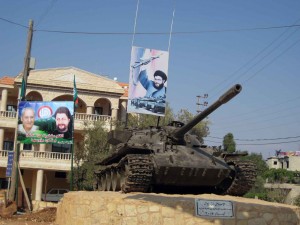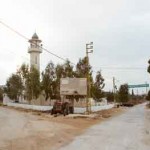Edutainment Radio Programmes
 The ways in which journalists frame HIV stories can strongly contribute towards news consumers’ perceptions of the epidemic. This paper discusses the news values of HIV radio programmes in Ethiopia, Kenya and South Africa. It argues that the culturally appropriate ‘humanisation’ of HIV stories and the proper use of conflict as adding news value are paramount to the impact of stories.
The ways in which journalists frame HIV stories can strongly contribute towards news consumers’ perceptions of the epidemic. This paper discusses the news values of HIV radio programmes in Ethiopia, Kenya and South Africa. It argues that the culturally appropriate ‘humanisation’ of HIV stories and the proper use of conflict as adding news value are paramount to the impact of stories.
The skillful application of news values can make almost any HIV-related story newsworthy and therefore part of mainstream news. Moreover, it is maintained that HIV advocacy environments contribute to the newsworthiness of HIV stories in the media.
The AIDS advocacy milieus of South Africa and Kenya are compared and related to the type of HIV stories that are published and broadcast in the respective countries. Journalism training methods are critically discussed in the context of the above. It is argued, that, in developing countries, where journalists often lack basic journalism skills, it is not sufficient to provide reporters with HIV-related information; HIV information sharing should be combined with general journalism training and mentoring.
Introduction
In December 2007, an excited Bashir Osman – a Somaligna-speaking journalist from Dire Dawa in the east of Ethiopia – broadcast a live call-in show on breastfeeding and HIV to his Somali audience on Dire 106.1 FM. According to the most recent Ethiopian government figures, Dire Dawa has the second highest HIV prevalence rate in the country, and almost doubles the national average. Each year there are almost 1, 000 HIV positive pregnancies with at least 230 children born with the virus. Yet this was the first HIV programme that Bashir had ever produced. AIDS was so stigmatised in the region that Dire 106.1 FM hardly ever discussed it on air. And Osman had no problem following this route. A week before the broadcast, the journalist – like most of his listeners – refused to be in the same room as people with HIV because he “didn’t want to risk breathing the same air” (Osman cited in De Masi, 2008) as them. He would never consider sharing a plate, or hosting an HIV positive person in his home, and thought it a deep insult to be tested for the virus.
But then Osman accessed what turned out to be a precious piece of culturally relevant information: he learned that babies of HIV positive women can get infected with the virus through their mothers’ breast milk (personal communication, December 6, 2007). All mothers with babies in his community breastfed their infants x including his very own wife. His own five-month old baby could be at risk, he perceived with shock, because neither he nor his wife knew their HIV status. The realisation changed Osman’s entire view on AIDS, and HIV was suddenly a virus that had the potential to directly impact his own life and those of everyone else he knew, in ways he had previously vehemently denied (personal communication, December 6, 2007). In short, this piece of information made AIDS newsworthy to Osman, his community and his editors. It became something that was crucial and worthwhile to talk about.
HIV and the News Media
Several communication experts, AIDS activists and journalists (Collins, 2005; Kinsella, 1989; Malan & Gold, 2006; Scalway, 2003; Shilts, 1987) have argued that the news media have the potential to be an immensely powerful tool in the response to HIV. According to the Joint United Nations Programme on HIV/AIDS Executive Director (UNAIDS), dr. Peter Piot, “journalists can save more lives than doctors in terms of HIV prevention because preventing HIV is about communication and changing norms” (Piot, 2006).
Proving statements like this, however, is very complex; studies have not been able to conclusively show that stories in the news media have resulted in change in HIV-related behaviour on a large scale. Research has, however, strongly suggested that news stories are capable of setting the framework in which citizens discuss public events. McCombs and Shaw (1972) demonstrated that there was a strong relation between the topics that the news media highlighted during an American election campaign and the topics that news consumers identified as important. Another US study illustrated the power of broadcast news to set the policy agenda when it proved that evening news bulletins had the effect of defining the policy areas by which the president should be judged (Iyengar et al., 1984).
McCombs and Ghanem (2001) have argued that “the level degree of emphasis placed on issues in the mass media influences the priority accorded these issues by the public” (cited in Reese, Gandy & Grant, 2001, p. 67). Dearing and Rogers (1996) stated that this proposition had been supported by more than 200 studies. But, I would argue that the regular publishing or airing of stories on a certain subject does necessarily lead to the public taking note of that subject. If such stories do not directly relate to the lives of readers or broadcast audiences, or are not presented in captivating ways with strong news values, they are unlikely to influence news consumers’ opinions – whether negatively or positively. In the case of a highly stigmatised and sensitive subject such as HIV/AIDS, even more so. Read more
Occupied
 She smiles happily. She dances against the backdrop of a red banner that says Anticapitalista in Coca Cola letters.
She smiles happily. She dances against the backdrop of a red banner that says Anticapitalista in Coca Cola letters.
About an hour later I walk home.
I used to work for an antiquarian bookseller and one of his infamous statements comes to mind. “You can also know too much”, he would mumble grumpily whenever anybody was too eagerly displaying knowledge.
Not that a lot has changed. Don’t give me a pen and paper in order to make a list of what’s wrong with this world. I know I’m not supposed to, but secretly I still smile sometimes when the news shows images of shattered windows and smoking cars.
But I know more now. The revolution often aims wrong. The cars and the stores, they are innocent.
That’s the least of it.
It’s even sadder. I know now that summer comes after spring if you’re lucky. More often, nature throws a curve ball and goes straight to fall. Skips summer, just like that.
The beauty of revolution is in that one minute, that tiny spark, the core that starts it, wrote Canetti. It contains the sole ingredient we get to work with. Hope. No matter how naive. Without hope, nothing ever changes.
The sound of a bluesy piano drifts from an open window. “Of course”, I think to myself and smile.
If I was 18 years old, I would be standing right there, up front. At present time, I don’t want to crush the flower as it’s just starting to open her eyes.
Once Upon A Time – And Everything Changed
 A day at the end of June, 8:36 a.m. – A high-speed train, G7381 with the name “Harmony”, takes me from Shanghai to Hangzhou.
A day at the end of June, 8:36 a.m. – A high-speed train, G7381 with the name “Harmony”, takes me from Shanghai to Hangzhou.
Apparently it was Marco Polo who said 下来有苏杭 上 有天堂 and indeed, it seems to be heaven on earth. I am traveling there on the ground, at the earthly speed of nearly 350 km.
Outside the built-up areas, the fields, the streets and the huge green-house areas – passing by like images from a dream, appearing and disappearing like the clouds one may see looking out of the window of an aircraft … 350, 300 …… 250, 200, 180, 140, 90, 80, 55, 30, 20, 10, 9, 7, 4 … the train stops.
It has been a while since I lived in a town in Germany – mind, not a village, not a city: a town. It has approximately 25,000 inhabitants and occasionally we would go to a city nearby: a place with probably 100,000 inhabitants. Well, we thought of it as a city. At least it had an opera house and a theatre and I had been privileged enough to occasionally be able to go there – after finding the required transportation and money. It’s among my favorite childhood memories, one of the things I thoroughly enjoyed during my childhood. Perhaps I enjoyed it so much because it made a little dent in an environment that seemed, and actually was, smooth. Any attempt to escape only lead to slippery ground that, although it required permanent movement, did not allow progress.
A little later this tiny, seamless world had burst. For me, in the same way as for the many others who turned to the streets at the end of the 1960s – against the aggressors in Vietnam, against German media-giant Springer who had been one of the gofers of the aggressors in the far-east; against the Gaullist system in France. But we also turned to the streets in favour of matters – of Bloch’s notion of the Principle of Hope and Marcuse’s realist utopia: You should sleep for nine hours without dreams. Then you will have the whole day for dreams.
Read more: Once Upon A Time-And-Everything-Changed
From The Web – The Innocence Network
 The Innocence Network is an affiliation of organizations dedicated to providing pro bono legal and investigative services to individuals seeking to prove innocence of crimes for which they have been convicted and working to redress the causes of wrongful convictions.
The Innocence Network is an affiliation of organizations dedicated to providing pro bono legal and investigative services to individuals seeking to prove innocence of crimes for which they have been convicted and working to redress the causes of wrongful convictions.
We invite you to use this site to learn more about our members and exciting news, our annual conference and our membership guidelines and as a resource for past amicus briefs on post-conviction innocence claims. If you are interested in having the Network submit an amicus brief in a case, please fill out this request form.
You can also see who is on the Network Board, learn about the history of the Network, and contact the Network Support Unit.
In 2012, the work of Innocence Network member organizations led to the exoneration of 22 people imprisoned for crimes they did not commit
Read more: http://www.innocencenetwork.org
Hezbollah: From Nasser To Nasrallah ~ A Historical Context
“National liberation, national reawakening, restoration of the nation to the people or Commonwealth, whatever the name used, whatever the latest expression, decolonization is always a violent event.” – Frantz Fanon, The Wretched of the Earth, 1.
In order to understand Hezbollah’s political and social project it is crucial to start by placing the movement within the wider context of Middle Eastern conflicts. The Palestinian cause and the failure of the Arab nationalist experience of Gamal Abdel Nasser in the 1950’s and 1960’s in addition to the colonial experience which determined the region’s maps, borders and current political identities are all necessary components of Hezbollah’s political discourse. To this day, Palestine remains central in Arab political concerns and being Arab remains a political and ideological position that is in constant flux.
I will argue that the emergence of Hezbollah and subsequently their political discourse must be understood in relation to three main issues of contemporary Arab history:
a. the post-colonial liberation struggle for the establishment of independent political entities and identities (with Gamal Abdel Nasser’s Arab Nationalist experience as its most salient example);
b. the resurgence of Islam as a political force after the failure of secular Arab nationalism;
c. and the specifically Shiite political experience from the Iranian Revolution to the emergence of Hezbollah out of the Lebanese Shiite condition.
In this essay, written in 2012, I will present the context for the emergence and development of Hezbollah’s political discourse. The preceding three conditions will be investigated in order to better understand the discourse and identity that this Islamic movement is promoting in Lebanon and the Arab world. After exposing the context of emergence and decline of Arab nationalism, the rise of political Islam as a response, and the specific experience of Shiite political movements in Lebanon, I will show how Hezbollah’s political discourse transformed from an uncompromising Shiite militia in the 1980’s to a Lebanese political party and resistance movement in the 1990’s and with the liberation in 2000, to a regional force after the 2006 war.
Looking at the political landscape in the Middle East today, one can notice that the same political divisions of the early post-colonial time remain at the heart of current conflicts between the pro-Western “moderate Arab states” and the anti-Western “axis of refusal”. In fact, since the end of European direct colonial rule over the Arab world, two opposing camps emerged that were to mirror the global division of the Cold War between a revolutionary socialist pro-Soviet camp and a reactionary pro-Western one (Kepel 2006, 46). The first group adopted a revolutionary rhetoric refusing western influence and preaching armed resistance against the Israeli occupation of Arab lands and a refusal of the Western post-colonial influence. This group led by Nasser’s Egypt in the 1950’s and 1960’s was mobilizing the Arab masses with a discourse of Arab nationalism and socialist reforms. On the other side, were the monarchical regimes of the Gulf, Jordan, pre-revolutionary Iraq and Tunisia. This pro-Western camp was concerned in preserving the status quo and curtailing the advancement of Arab nationalism and socialism into their societies. Read more
Niet leerlingen, maar volwassenen moeten pesten indammen
 Pesten staat volop in de belangstelling sinds het dit schooljaar (2013) bij enkele tieners mogelijk (mede) tot zelfdoding heeft geleid. Uit onderzoek blijkt dat pesten in 2012 intensiever is geworden: het aantal pesters neemt af maar zij maken meer slachtoffers. Staatssecretaris Dekker wil dat scholen pestgedrag terugdringen met een bewezen effectieve aanpak. Maar welke dan?
Pesten staat volop in de belangstelling sinds het dit schooljaar (2013) bij enkele tieners mogelijk (mede) tot zelfdoding heeft geleid. Uit onderzoek blijkt dat pesten in 2012 intensiever is geworden: het aantal pesters neemt af maar zij maken meer slachtoffers. Staatssecretaris Dekker wil dat scholen pestgedrag terugdringen met een bewezen effectieve aanpak. Maar welke dan?
Als we de pestprogramma’s op de website van het Nederlands Jeugd Instituut (http://www.nji.nl) bestuderen, zien we hoeveel tijd en geld op scholen worden verspild aan benaderingen die niet bewezen effectief zijn.
Meestal stopt het pesten slechts gedeeltelijk of tijdelijk. De nieuwste trend is een training aan hele klassen, waarbij leerlingen leren om elkaar aan te spreken op pestgedrag. Maar ook daarvan mogen wij niet te veel verwachten, want het pesten gaat daarna in 60% van de gevallen gewoon door.
Dat laatste is niet verbazingwekkend. Uit schriftelijke leerling-enquêtes in het Voortgezet Onderwijs over de omgangssfeer in de klas blijkt dat meerdere klasgenoten bij onprettig gedrag daar regelmatig iets van zeggen. Echter, bij de vraag of dat helpt, schrijven zij vrijwel allemaal: ‘Nee, even later gebeurt het weer.’ Of: ‘Nee, want dan krijg ik zelf een snauwerige opmerking terug.’
De prikkel die uitgaat van corrigerende opmerkingen van klasgenoten is voor veel pesters te zwak. Pesten is een vorm van groepsvermaak; iets doen waar je samen over kunt lachen fungeert als een krachtig bindmiddel in de eigen vriendenkring en levert een gevoel van superioriteit op. Die ‘winst’ laten de lolbroeken zich niet zomaar ontfutselen. Ook niet door klasgenoten. Read more




